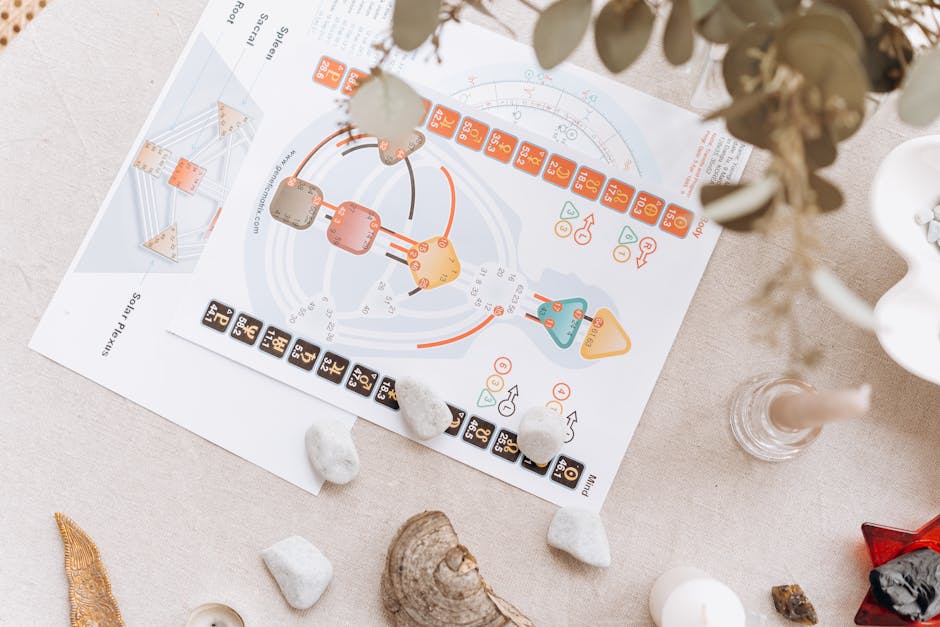Harnessing Serendipity: Transform Failures into Startup Growth
In the whirlwind of entrepreneurship, every failure feels like a devastating setback. But what if I told you those mishaps could be your most powerful growth catalysts? “Harnessing Serendipity: Transform Failures into Startup Growth” is more than a mantra; it's a modern strategy for startups eager to turn adversity into advantage. Embracing unexpected detours not only accelerates innovation but also cultivates resilience and adaptability—traits that are essential in today’s fast-paced market.
The Power of a Growth Mindset

Before we dive into turning failures into growth, let's talk about mindset. A growth-centric mindset equips entrepreneurs to see failure not as the end but as a crucial part of the journey. Carol Dweck, a renowned psychologist, eloquently points out that individuals with a growth mindset perceive challenges as opportunities to grow. When faced with an unexpected failure, they ask, “What can I learn from this?” rather than “Is this the end?” This crucial shift in perspective can be a gateway to continuous improvement, innovation, and business expansion.
Embracing the Unexpected

The journey of every startup is a rollercoaster of ups and downs. Consider the story of Slack, initially built as an internal communication tool for a gaming company. The game flopped, but the resulting platform became a billion-dollar enterprise. Harnessing serendipity means recognizing the potential buried beneath failed ideas and allowing them to evolve into successful ones.
Likewise, many startups have uncovered innovative marketing strategies through unplanned efforts. When you read about unplanned marketing initiatives, you'll find that spontaneity can lead to genuine engagement, drawing customers to your brand in ways you might never have anticipated.
Learning from Failures

Failures can reveal valuable insights that pave the way for future innovations. For example, the once-prominent brand Coca-Cola launched a drink called "New Coke" in 1985, which was a commercial disaster. Nevertheless, the company leveraged this failure to reinvigorate its brand identity, driving customer loyalty and engagement through nostalgia. This experience teaches us that failure can prompt businesses to pivot, allowing them to resonate more deeply with their audience.
Additionally, startups can harness customer feedback to recover from setbacks. Engaging in customer feedback loops allows you to adapt your products or services based on real supporter insights, building a more resilient business model.
Reframing the Narrative

Successful entrepreneurs often reshape their brand narratives when faced with setbacks. Humble beginnings can be turned into compelling origin stories that attract customers. By sharing your failure transparently, you not only humanize your brand, but you also build a loyal community that appreciates authenticity.
Take a cue from brands that have successfully navigated this path, understanding that people are drawn to stories of vulnerability and perseverance. The beauty of a narrative woven with honesty can foster emotional connections with your audience, so don’t shy away from sharing what went wrong and how you overcame it.
The Role of Serendipity in Business Growth

Serendipity can be a significant ally if embraced as part of your business strategy. Research highlights that chance encounters often lead to personal and professional breakthroughs. Whether it’s through networking events, lunch meetings, or informal gatherings, being open to the unexpected connections can yield the most fruitful collaborations.
The art of serendipitous networking can propel startups forward in ways that seem improbable at first glance. By nurturing these unexpected relationships, businesses can tap into new resources and ideas that wouldn’t have come to light under ordinary circumstances. Engage with professionals outside your traditional circle—innovative partnerships sometimes bear fruit in the most unconventional forms.
Cultivating a Serendipity-Driven Environment

You can create a company culture steeped in serendipity by promoting creativity and innovation. Consider workshops, brainstorming sessions, or even cultivating a summer retreat for your team that fosters wild ideas, as discussed in this blog post. Encourage employees to embrace failure without fear of persecution, and in doing so, you will stimulate a creative environment where new ideas can flourish.
Additionally, engaging with micro-influencers and local communities can also enrich your business growth narrative. When you collaborate with local artisans, you connect more deeply with your market, creating authentic relationships that resonate with your brand ethos.
The Importance of Adaptation

In the modern business landscape, adaptability is vital. Rapid changes in consumer preferences necessitate an agile approach. Companies like Netflix have thrived by pivoting from DVD rentals to streaming services, proving that the ability to adapt can transform potential failures into remarkable success.
By harnessing predictive analytics, as discussed in this article, startups can anticipate market shifts and consumer behavior more effectively. By adapting to feedback and data, you can pivot away from failure, crafting a path toward sustainable growth.
Crafting a Reactive Business Model

To turn failed attempts into advantages, consider establishing a reactive business model. This approach enables your startup to embrace change while remaining responsive to market demands. Implementing agile practices can allow for swift adjustments in strategy, honing in on what consumers genuinely want and need.
It is also worth noting the importance of storytelling in this paradigm shift. Your capacity to narrate your brand and growth stories effectively can create genuine connections with your audience. As you undergo transformations—whether through a market pivot or a product shift—sharing these stories helps in reinforcing trust and loyalty among your consumer base.
Cultivating Customer Relationships

Building a solid customer relationship can also serve as a lifeline during tough times. Engage with your audience proactively and authentically. Customer loyalty often ties back to how businesses address failures and take responsibility. When your business stumbles, it’s paramount to communicate with honesty and offer solutions.
Creating micro-interactions within your customer transactions, as discussed in this post, can leave a lasting impression, turning disappointed customers into long-term advocates for your brand.
The Role of Behavioral Economics

Understanding behavioral economics can provide critical insight for startups navigating setbacks. Businesses can learn to predict how customers make decisions and tailor their strategies accordingly. The principles of behavioral economics shed light on consumer psychology, enabling startups to craft marketing messages that resonate deeply and drive conversion—even following less-than-successful phases.
When you frame an offer or address a past failure, consider how behavioral principles influence perceptions and decisions. Your ability to navigate customer perceptions effectively can transform your startup’s story, attracting more patrons and encouraging trust.
Next Steps
Embracing failure is not a matter of celebrating it; it's an opportunity for growth and transformation. Realign your mindset toward resilience, adaptability, and storytelling to navigate future uncertainties.
Formulate a plan to embrace serendipity: look for unexpected pathways, collaborate with diverse talents, and leverage past missteps as learning opportunities. With a proactive approach, you can leverage failed ventures to drive innovation, foster meaningful relationships, and ultimately gear your startup towards significant growth. By executing the insights shared throughout this article, you're not just surviving—you're setting the stage for unparalleled success and long-term sustainability.
Final Thoughts
The path of entrepreneurship is often riddled with unpredictability. However, it's those very twists and turns that can unlock avenues for growth. By internalizing these lessons and strategies—transforming failures into stepping stones rather than stumbling blocks—you can harness the power of serendipity in your startup’s journey. Remember, every setback can be the foundation for the next innovative stride if you navigate it with an open mind and a resilient spirit.



